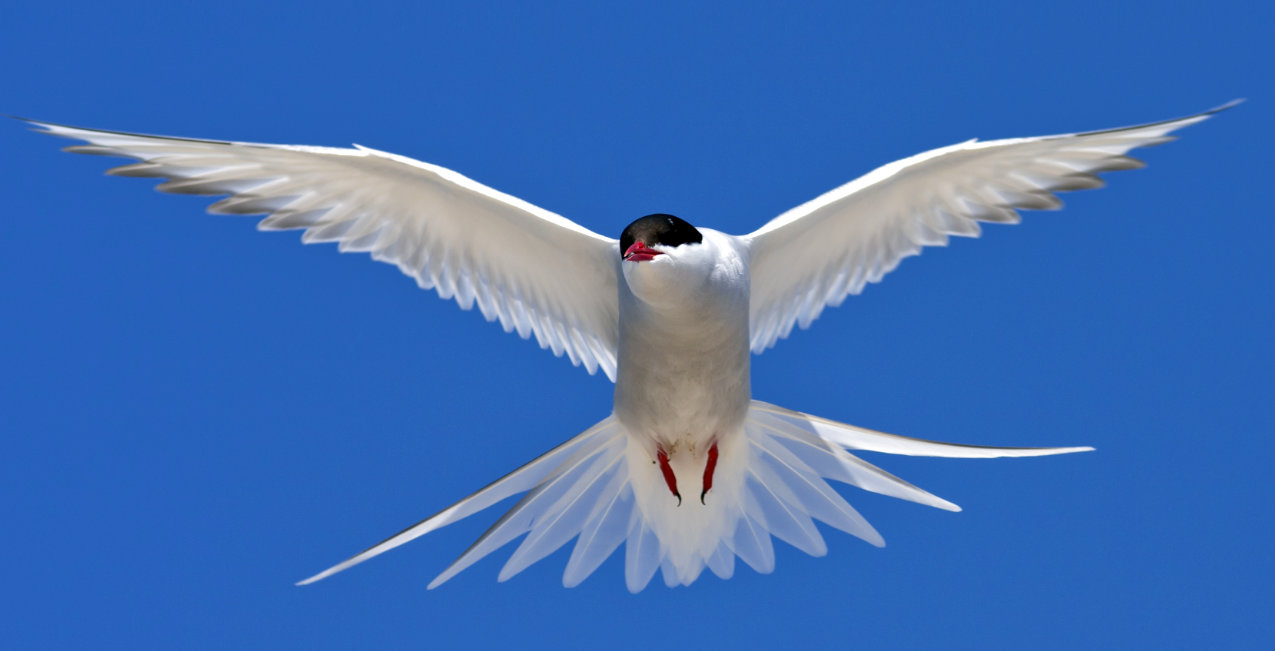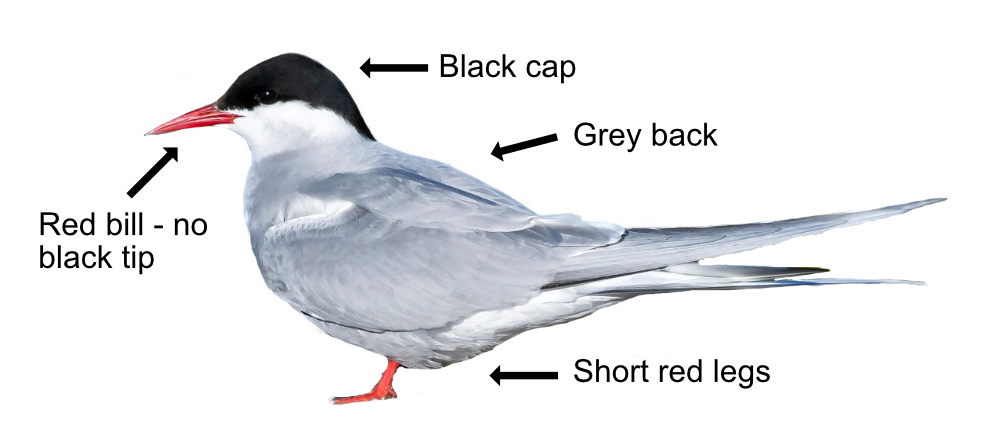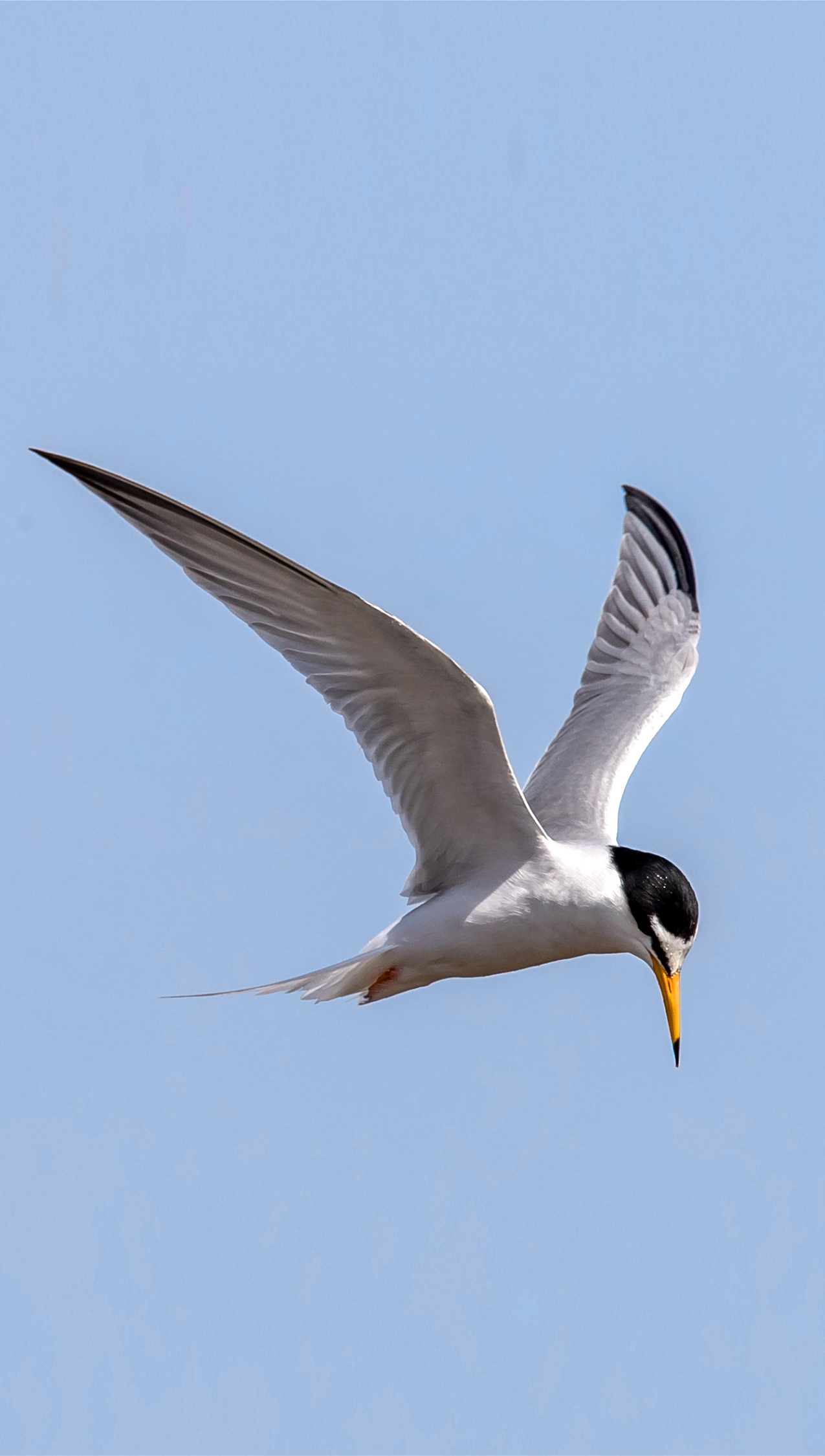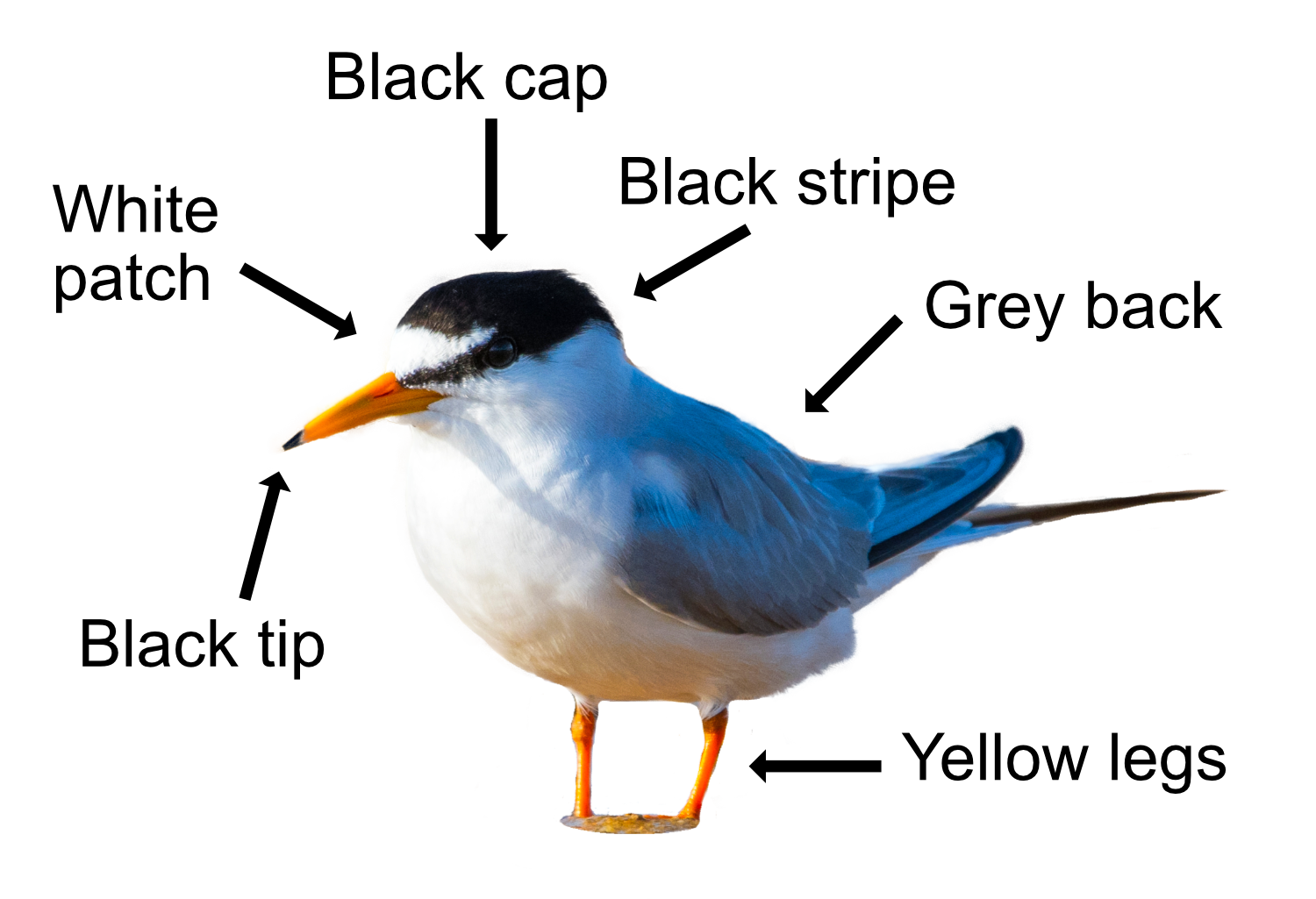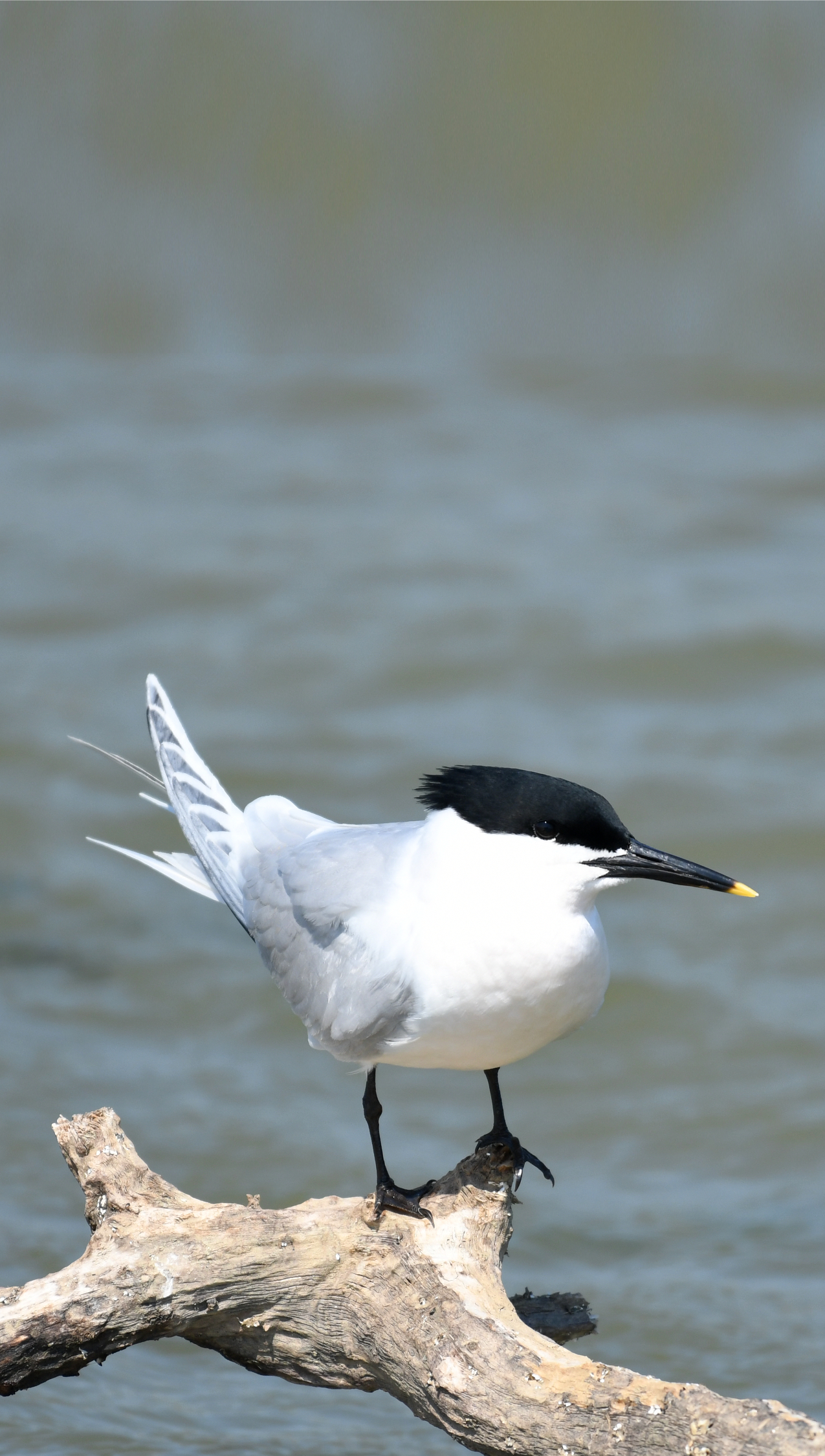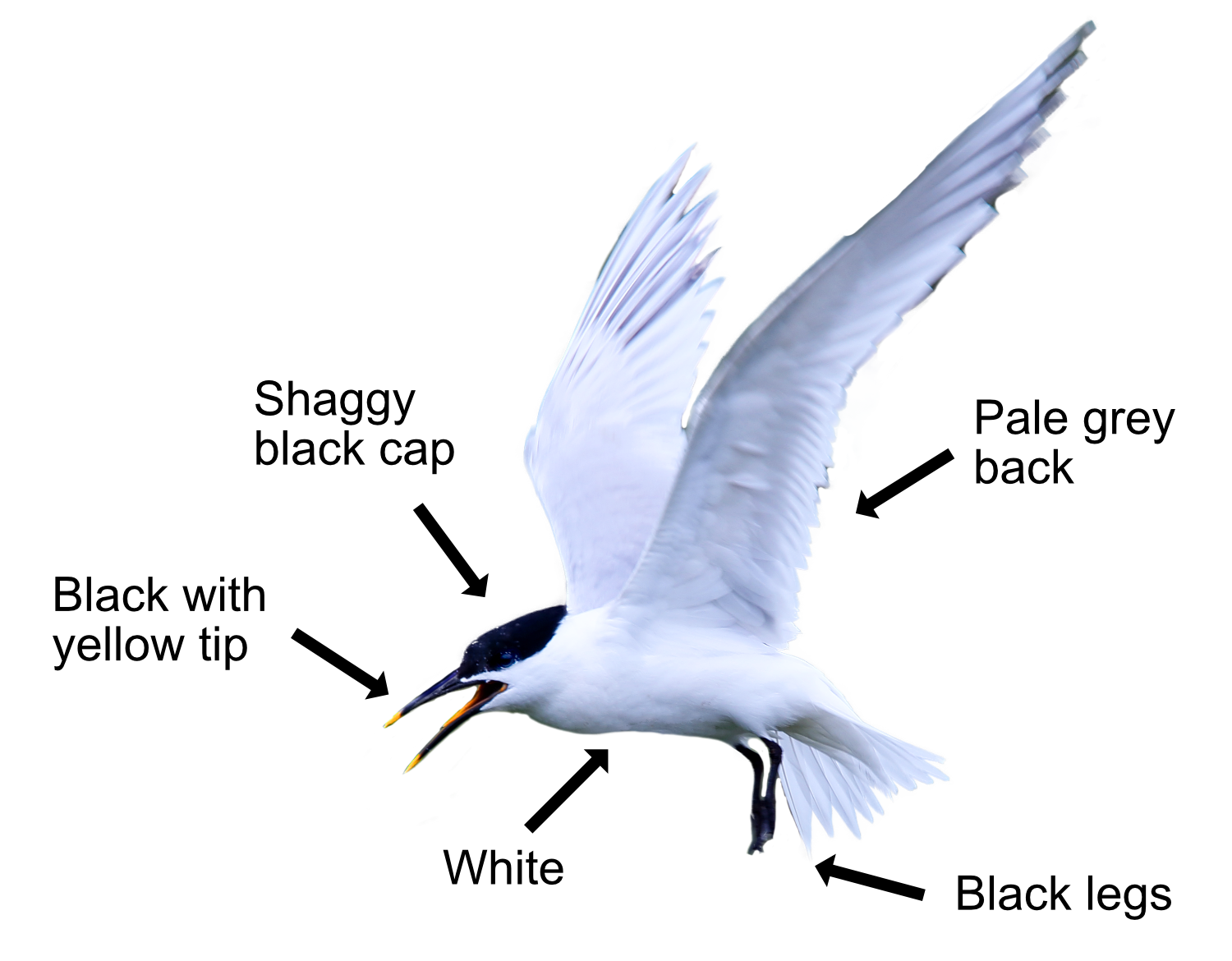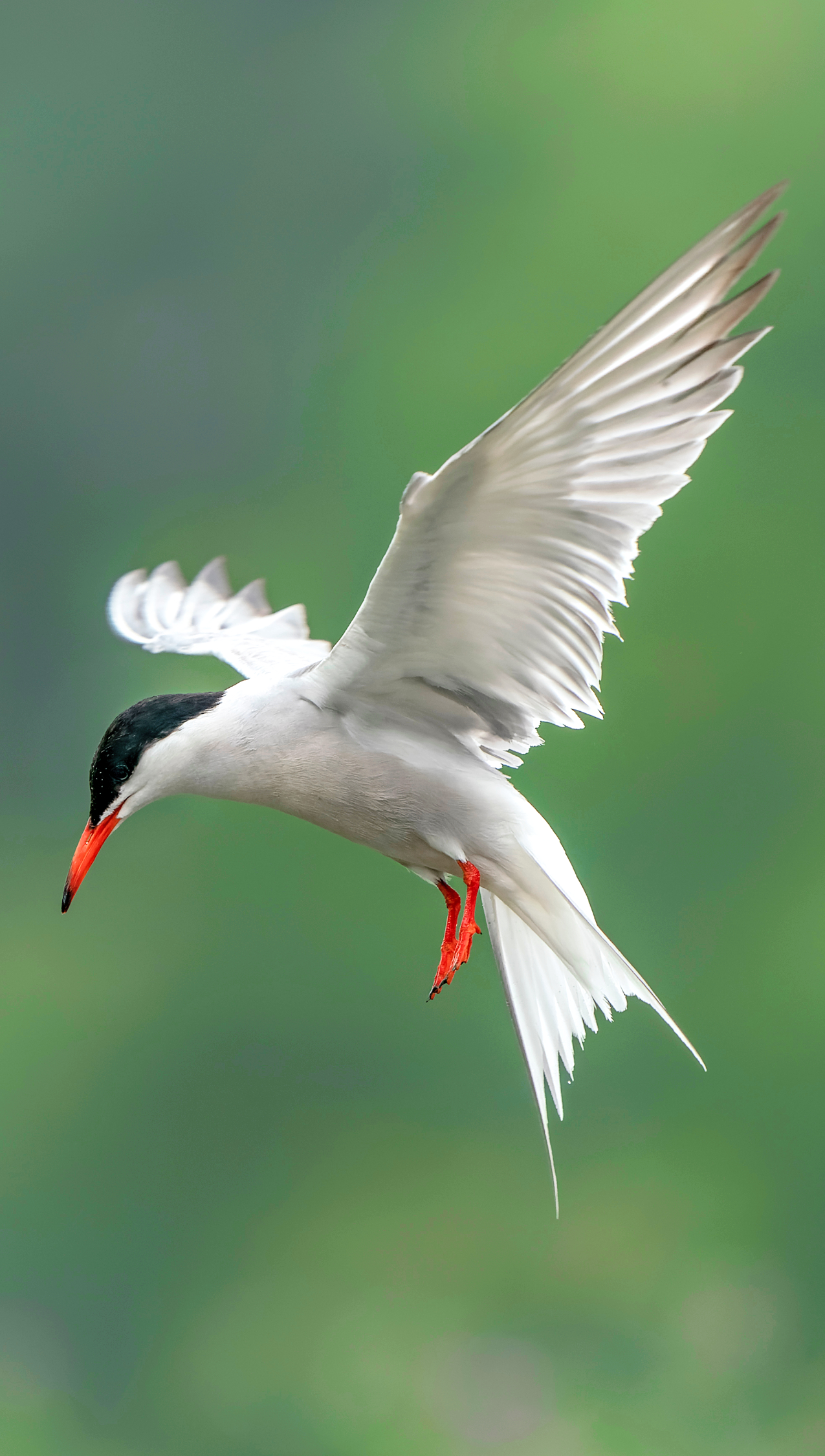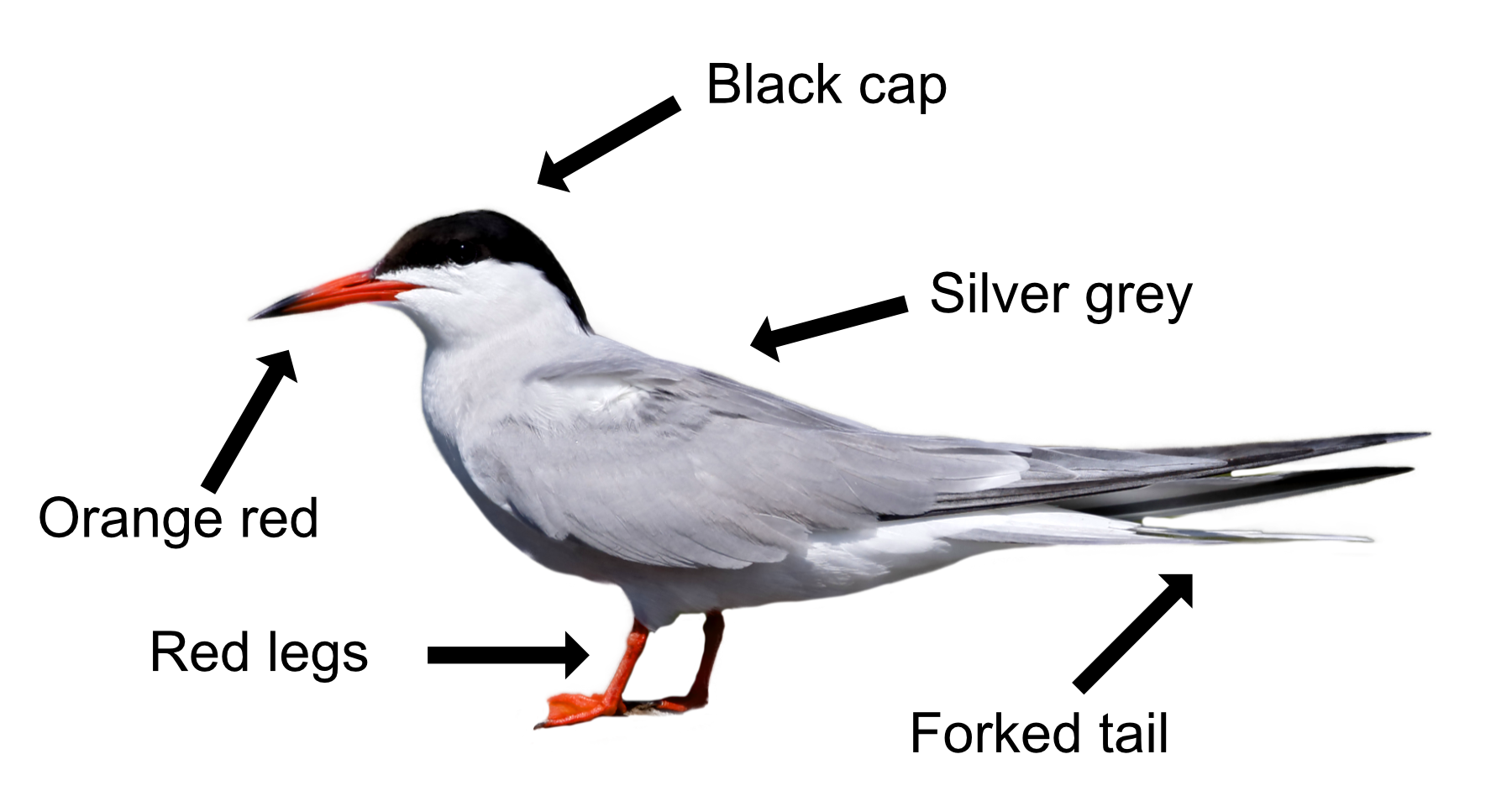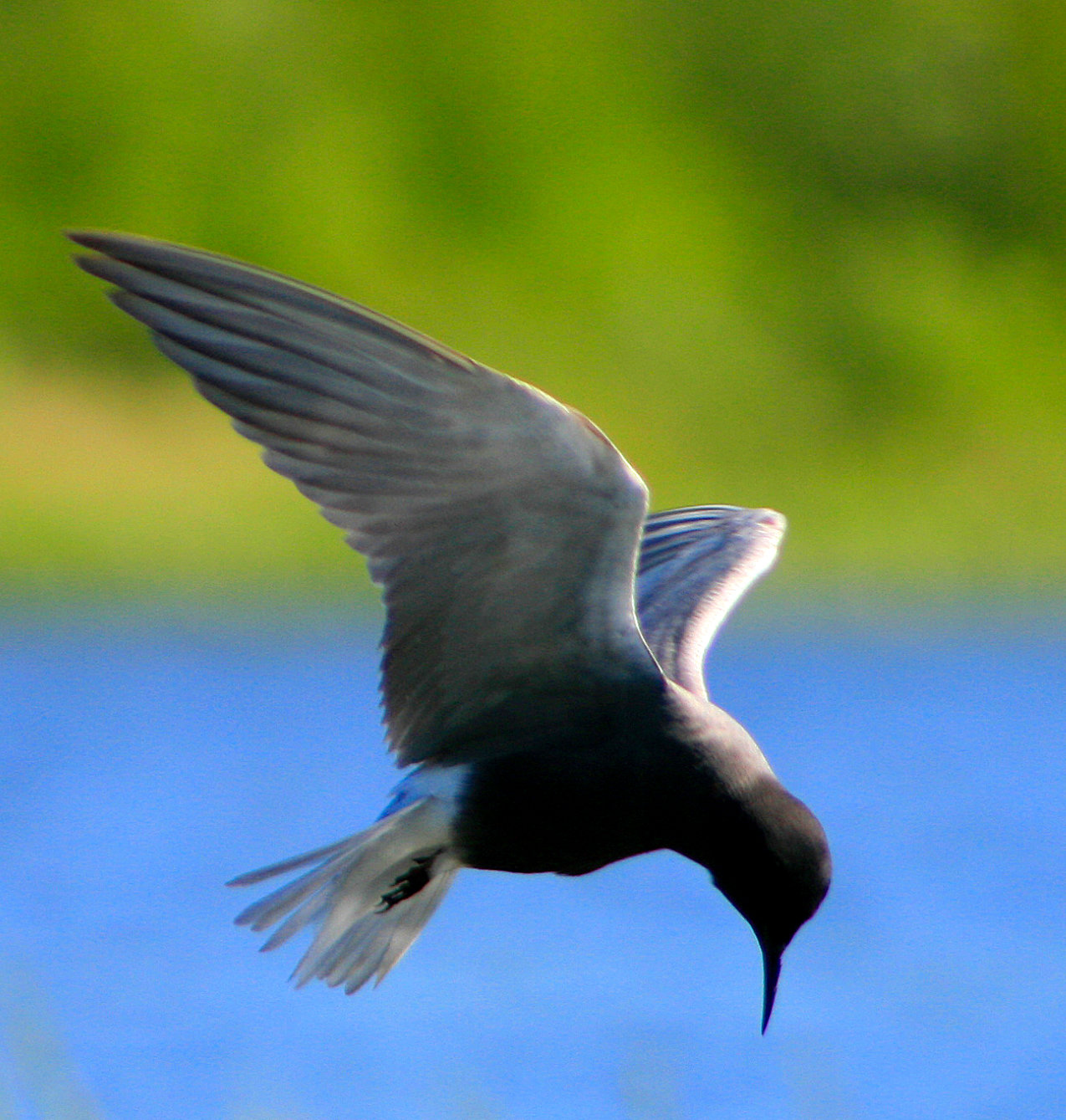
The Black Tern is a rare spring and autumn visitor to freshwater marshes and reservoirs. It mainly lives in coastal West Africa and pops here to get bird twitchers excited. The Black Tern belongs to a family known as 'Marsh Terns' because they like marshes.
In the summer, the Black Tern has a sooty black head and body, slate grey wings, a black bill and a white tail. It looks very different in winter, with a white body, a black crown, black marks on its shoulders and paler wings. They look lazy and buoyant in flight, dipping down to pick insects off the water's surface. Their call is a harsh "kreert!"
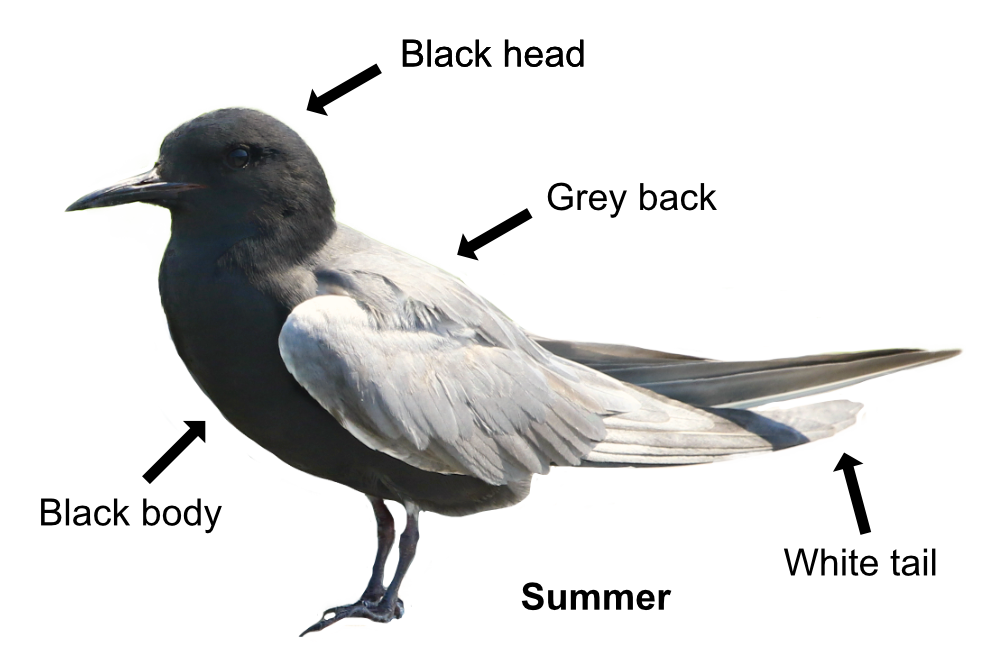
Unlike the 'white' Terns, Black Terns do not dive for fish, but forage by picking food from the water's surface or catching insects in flight. They mainly feed on insects, larvae, amphibians and small fish.
Black Terns don't breed here anymore. Their freshwater breeding grounds are in Europe, stretching from Denmark to Spain. They usually nest in small colonies of about 20 pairs. They lay 2-4 eggs on a mat of floating vegetation or in a scrape close to the water's edge. While mum sits on the eggs, dad brings food to feed her. Mum and dad defend the nest with shrill screams and will relentlessly swoop at any intruders until they retreat. The youngsters hatch after 21 days and can fly 25 days later, soon becoming independent. They will remain at the wintering grounds for their first year. Black Terns also breed in North America, but these migrate to the coasts of South America.
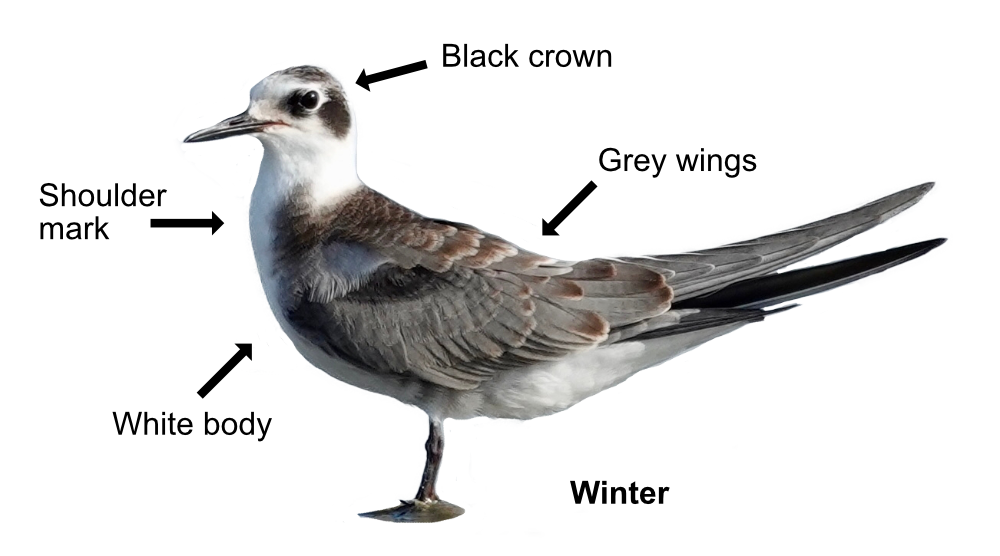
Only a few hundred are seen in Britain each year, though about 170,000 pairs breed in Europe. They used to be abundant in the eastern Fens until the 1840s when drainage of their breeding grounds stopped them breeding here. Attempts by the Black Tern to recolonise England have so far been unsuccessful.
Their Latin name is 'childonias niger' where 'chlidonias' comes from the Ancient Greek 'khelidonios' meaning 'swallow-like' and 'niger' is Latin for 'shining black'. In some lights, the Black Tern can look blueish and has the old English name 'blue darr'.
